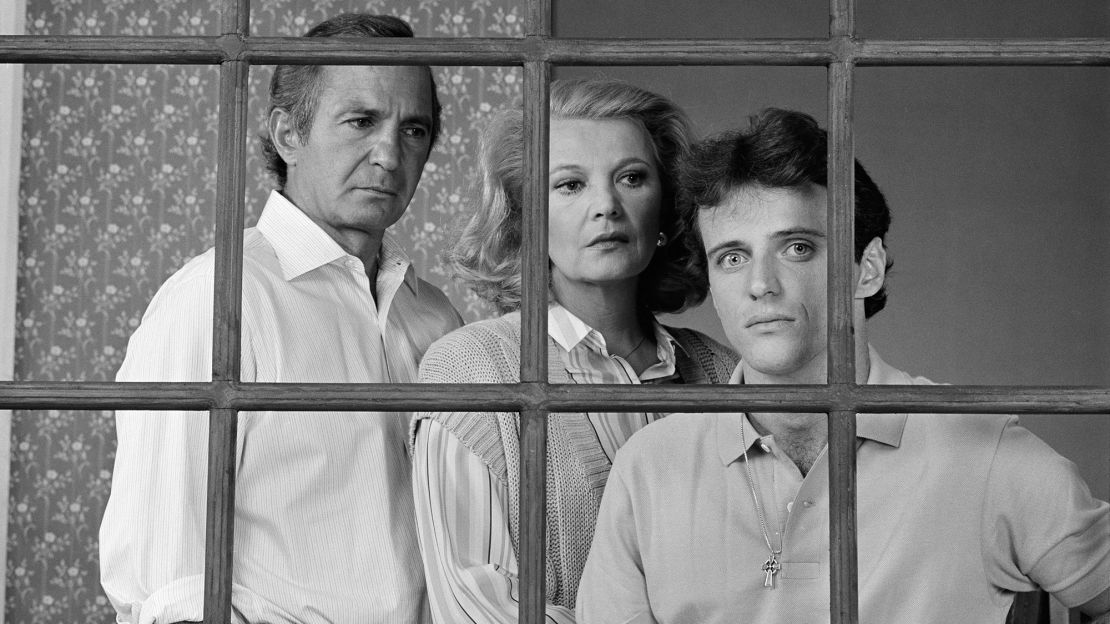Program note: Explore the decade that continues to fascinate us today: CNN Original Series “The Eighties” airs Thursdays at 9 p.m. ET on CNN.
Story highlights
In the '80s, U.S. films and TV shows were slow to acknowledge the AIDS crisis
1985's "An Early Frost" is widely considered the first film to deal with AIDS
NBC's "St. Elsewhere" in 1983 was among the first prime time TV shows to feature an AIDS patient
In the early 1980s, the AIDS crisis was being covered nightly on the news – but that was likely the only time you’d hear about it on your television.
The entertainment industry struggled to produce story lines or songs around an epidemic that was shaping the national conversation of that decade.
The disease first surfaced in the early 1980s: In June 1981, the Centers for Disease Control and Prevention reported cases of a rare lung infection found in five previously healthy gay men living in Los Angeles.
It would become the first official report of the disease we now know as AIDS.

But fear about the deadly disease quickly took hold, and since it was tied mainly to homosexual men – many of whom were not openly gay – public outpourings of sympathy were the last thing you saw.
As Elton John would later write in a CNN opinion article: “Around the country, family members shunned infected relatives, doctors were afraid to touch AIDS patients, let alone treat them, and hospital wards filled up with young men covered in lesions, dying excruciating deaths.”
Hard to get your 21st-century mind around that, right?
So perhaps it isn’t surprising, then, that it wasn’t until the mid to late ’80s that a few flutterings of references to the AIDS crisis began to pop up in popular music, TV programs and movies.
And even then, many of the artists who first used their art to broach the delicate topic were obscure pop bands or directors of fringe movies. To wit, one of the first pop songs to deal openly with the danger posed by AIDS was “Pretty Girls and Pretty Boys” by Book of Love.
Remember them? Maybe not. And that song didn’t come out until 1988.
A subject difficult to broach
Few Hollywood films touched the topic. In fact, the most prominent box-office film about AIDS made in the 1980s – Norman Rene’s ”Longtime Companion’’ – didn’t officially reach widespread movie theater distribution until 1990. It debuted the year before at the Mill Valley Film Festival in California, according to IMDb.com.
On American TV, there was a trickle of one-off episodes in the early ’80s on several shows, typically medical dramas.
In 1983, NBC broadcast an episode of “St. Elsewhere” in which a politician checks into St. Eligius Hospital and learns he has AIDS. That episode is considered the first among prime time series to feature an AIDS patient, according to the Archive of American Television. Three years later, one of the show’s most prominent characters, Dr. Robert Caldwell, played by Mark Harmon, will learn he has been diagnosed with HIV. But that’s three long years later.

In the meantime, another TV medical drama, “Trapper John, M.D.” would feature a minor character with AIDS in 1985. The same year, a TV movie called “An Early Frost” featured actor Aidan Quinn, whose character has AIDS.
It is widely considered the first film of any kind to deal with the AIDS epidemic.
David Caplan, a celebrity journalist and former editor at People magazine, explained that popular culture considered the AIDS crisis a “taboo” topic. That’s largely because an AIDS diagnosis back then was seen more or less as a death sentence – and for many, it was just that.
Because of the taboo, early references to AIDS sometimes took unusual approaches, he said.
“It was always from afar and often involving a heterosexual character, which was good because it was trying to normalize it,” Caplan said. “But it was also questionable in terms of how realistic it was, because it was a disease that was ravaging the gay community.”

Caplan cites an episode of the NBC comedy “Golden Girls” in which Rose, Betty White’s character, receives a letter from a hospital warning her about the epidemic after she received a blood transfusion.
“That was raising awareness of the disease, introducing it to other demographics,” he said. “Old white women would not perceive themselves as being involved in the AIDS epidemic.”
And yet, Caplan said, such treatments often strained credulity.
“It’s like, I get it, but it’s not realistic,” he said.
He added, “It was a disease a lot of people were not informed about. There were lots of misconceptions and obviously, TV and movies reflect the culture at large.”
That “Golden Girls” episode aired in 1990 – and yet it’s one of the most cited examples of how 1980s Hollywood tried to deal with AIDS, unable to do so until the end of the decade.
In the music world
There were few songs that even hinted at the AIDS crisis until 1987 when Alex Chilton released “No Sex,” Prince made a quick reference to AIDS in a single line of the song “Sign o’ the Times,” and the fourth single off Cyndi Lauper’s “True Colors” album – Boy Blue – was dedicated to a friend who died of the disease.
Lou Reed, already an icon in the 1980s, released a song called “Halloween Parade” about the effects of the AIDS crisis in New York. At the time, the song, released in 1989 on his well-received album “New York,” received little air time or critical notice. The content of the song was somewhat obscured by Reed’s signature talk-like singing style.
Book of Love’s 1988 song “Pretty Boys and Pretty Girls” openly spelled out the danger of AIDS, with lyrics such as “strangers in the night exchanging glances, but sex is dangerous, I don’t take my chances … safe sex, safe sex.”
Not surprisingly, one of the main venues to deal with the nascent AIDS crisis was Broadway, which has had a long history of employing gay playwrights, actors and others. One play in particular that reached a fairly broad audience broached the topic: Larry Kramer’s “The Normal Heart” which opened on Broadway in 1985.

In Elton John’s 2014 CNN article, the legendary musician says that Kramer’s play “tells a tale that many of us lived through, and many others did not survive.”
Based on Kramer’s experiences in the earliest days of the AIDS epidemic, “The Normal Heart” was remade as an HBO movie in 2014.
“Back then,” John wrote, “The New York Times refused to print the word ‘gay,’ and New York Mayor Ed Koch was agonizingly slow to respond to the unfolding epidemic. Fear was everywhere.”
AIDs strikes Hollywood icon
While Kramer’s play opened on Broadway in 1985, Broadway’s sister industry – Hollywood – was being forced to deal with the AIDS crisis.
A leading man in dozens of popular, successful films in the 1950s and 1960s, Rock Hudson announced he was dying of AIDS.
The reaction, both public and private, was shock. The groundbreaking AIDS movie, “Philadelphia,” starring Tom Hanks, was still eight years away.
Hudson’s illness was a wake-up call – one heeded most prominently by one of his co-stars, actress Elizabeth Taylor.
Taylor jump-started fundraising efforts for AIDs research with a 1985 benefit dinner for Hudson. He would soon collapse and die at age 59, becoming the first major celebrity to die of AIDS.
Rock Hudson: 30 years after star's death
That dinner led to the establishment of the American Foundation for AIDS Research, amFAR, and Taylor became the face of the organization – the face, in the artistic community, of the fight against AIDS.
By the end of the 1980s – the decade that saw the dawn of HIV and AIDS – the number of reported AIDS cases in the United States would reach 100,000, according to the Department of Health and Human Services.
As the deaths continued to pile up, many of the names would be drawn from the arts – an industry that was still grappling with how to depict AIDS and HIV infection in movies, TV shows and music at the end of the 1980s.


























